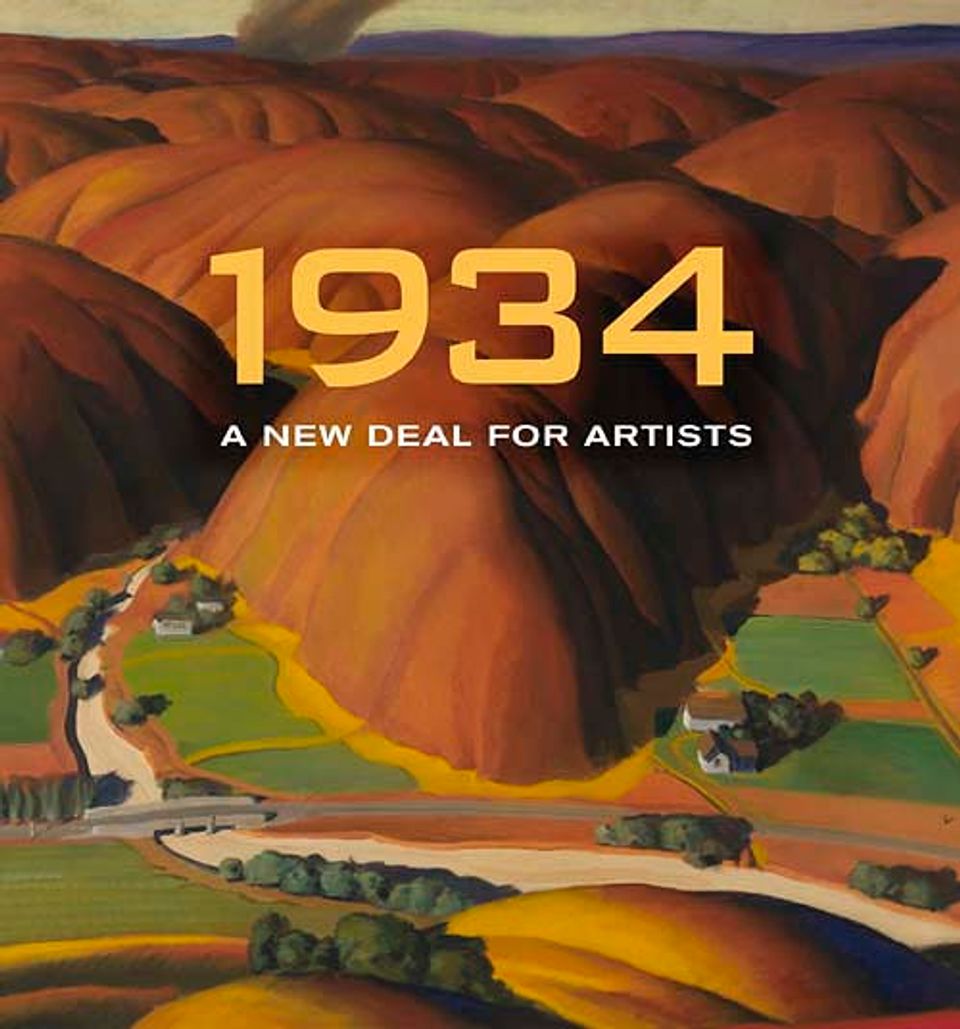Artwork Details
- Title
- The Farm
- Artist
- Date
- 1934
- Location
- Dimensions
- 38 1⁄4 x 46 1⁄8 in. (97.2 x 117.1 cm.)
- Credit Line
- Transfer from the U.S. Department of Labor
- Mediums
- Mediums Description
- oil on canvas
- Classifications
- Highlights
- Subjects
- Landscape — road
- Landscape — farm
- Architecture — detail — fence
- Architecture — farm — silo
- Architecture — farm — barn
- Landscape — weather — cloud
- Object Number
- 1964.1.36
Artwork Description
In the Seattle area where Nomura lived, many of his fellow Japanese Americans made their living as fruit and vegetable farmers. Since 1921 they had been subject to anti-alien laws that prevented foreign-born Japanese Americans and other aliens from owning or leasing land. Those born in America who could own farmland still suffered from prejudice. During the Great Depression many Japanese American farmers barely managed to survive, living only on what they grew themselves. It is no wonder that Nomura’s view of a farm during this period is disquieting.
As other Americans emerged from the Great Depression during World War II, Nomura and other Japanese Americans were victimized again by being removed from their homes, businesses, and farms to be interned in camps. Like his PWAP painting, Nomura's images made in internment camps feature dark skies and deep colors that evoke the shadow of injustice.
1934: A New Deal for Artists exhibition label
Perhaps Nomura wanted to paint a dream that remained unrealized. For decades, first-generation Japanese immigrants, the Issei, had struggled to live independently, leaving their menial jobs on the West Coast to work farms in the eastern counties of Washington and Oregon. Their children, the Nisei, continued to assimilate, and the Wapato Nippons baseball team won the minor league pennant in 1934, the year this painting was made. But restrictive legislation in western states prohibited most Asians from owning land. During World War II, powerful figures in the Northwest persuaded the government to relocate Japanese American farmers in the interest of "national security." Nomura and his family were transported to the largest camp, Minidoka, in Idaho, where they passed the war years. He created a portfolio of images of camp life that remained hidden in his son's garage for forty-five years, before they were shown. Nomura turned to abstract art after the war, but his career never fully recovered from the years lost at Minidoka.
Exhibition Label, Smithsonian American Art Museum, 2006















